This post is a deep dive into cosy culture, and a written version of my talk from the Si Lab Trends summit in April this year.
From adjective to lifestyle: The cosy convergence
I know that cosy is nothing new; it’s been a word we have used to describe a particular feeling for hundreds of years. In this post, I will look at the shift we’ve seen since the pandemic, from cosy as a descriptor to cosy as a lifestyle.
One of the things that I uncovered during this project was how many previously disparate themes now have an outwardly cosy element (largely thanks to social). I’m calling this the cosy convergence.
We’ll explore what it is, why it matters, how it’s manifesting on social media, and how you can use social listening insights to tap into it.
Between September 1st 2023 and April 1st 2024, across Pinterest, YouTube, Twitter, Facebook, TikTok, Twitch, Threads, and Reddit there were 63,095,396 mentions of cozy/ cosy which generated 1,859,322,923 engagements.
So how does cosy show up on various social channels?
Volume of Mentions Vs. Volume of Engagements by Kim TownendThe chart embedded above is interactive, so you can see the exact number of both mentions and engagements per platform.
First we’re looking at the volume of mentions, so how many posts we’re seeing around cosy on each platform.
Pinterest is the clear leader here, with forty-nine million thirty-six thousand six hundred twenty-four mentions, more than five times the amount of the closest competition. (it’s not uncommon for Pinterest to outperform other platforms, particularly if the topic being analysed is more traditionally female facing and lends itself to images)
But when we look at where the engagements are happening it’s an entirely different story. Although TikTok was only responsible for 969k mentions, it generated 1.8 billion engagements during our search. YouTube generated 60 million engagements. None of the other platforms even came close to these levels of engagement. This is a clear indication that video (and more particularly short form video) rules both social media and cosy culture.
Now that we know cosy culture is definitely a thing happening on social, we want to understand if it’s exclusive to social.
The first step in understanding whether a trend is bigger than just social is to see if it’s made the leap to search.
This chart shows the global search data around simply the word ‘cozy’ over the last five years. The search trend is extremely seasonal, but it’s on a steady upward trajectory and the forecast is positive.

Cool, so what is cosy culture exactly?

Cosy culture is strange because it’s fast culture (as defined by Grant McCracken) and it’s slow culture, and it’s heavily seasonal.
The slow culture part of it means it’s incredibly broad and accessible, the same way there’s a (tik)Tok for everything, there’s a cosy for everything.
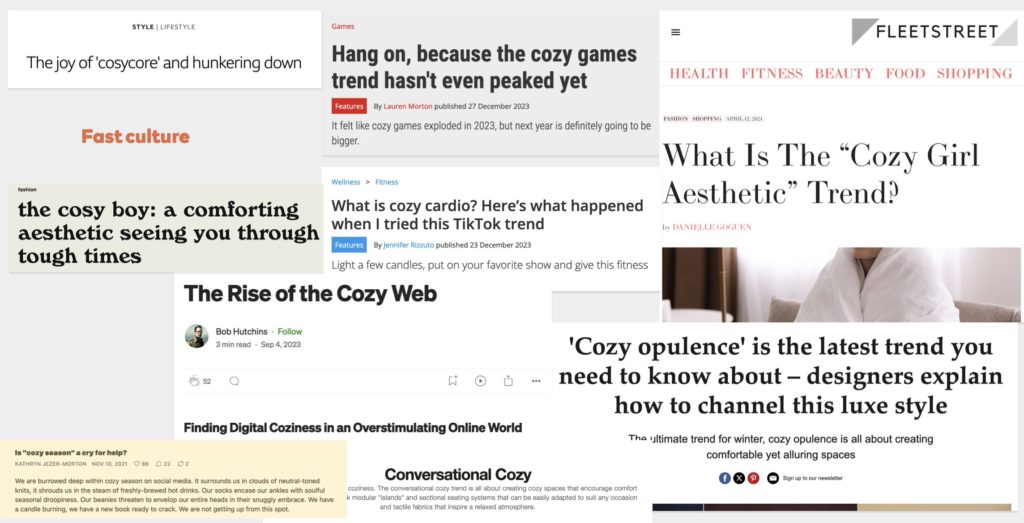
These headlines are all signals from the last year on various cosy subtrends that journos are writing about, but alongside these flash-in-a-pan-are-they-even-really-trends, the social data also shows us a move towards longevity and a cultural shift inward. Fast cosy culture can be used in your social, but is best as resposive content that captures a fleeting moment.
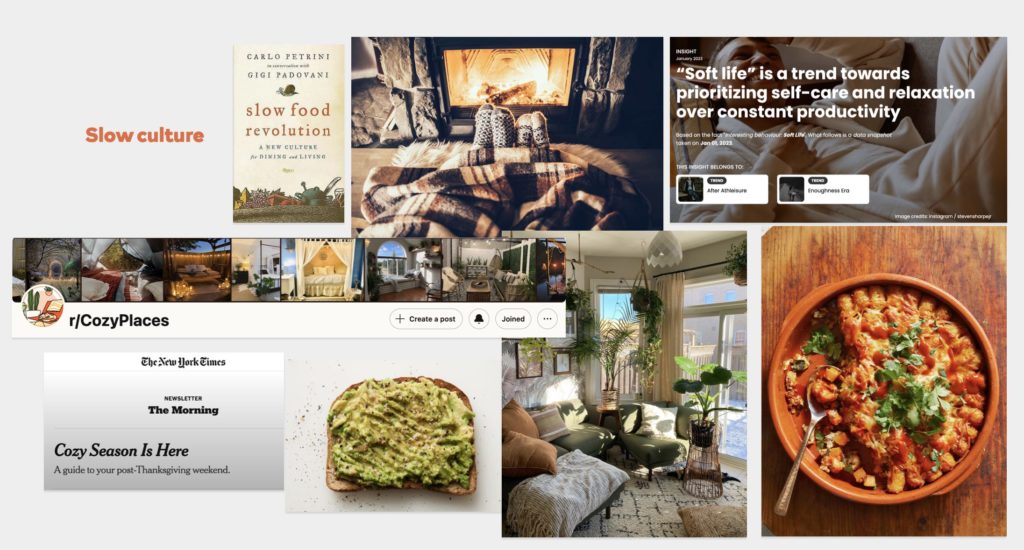
These slow culture signals are the cosy themes that have longevity, those rooted in tradition over fad. They tap into bigger human behaviours and desires and, as such, are better suited to a longer-form social strategy.
How is cosy playing out on social?
Who is talking about cosy things?
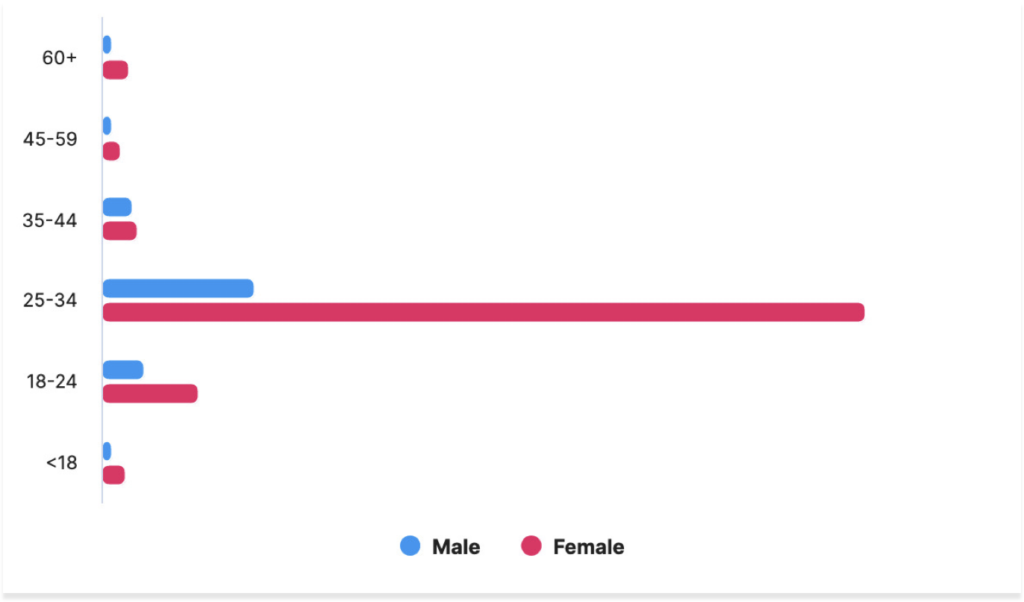
With a subject as big as this, I don’t usually pay too much attention to demographics, as they become more valuable as we cluster the audience.
However, I ran the audience to see if anything stood out immediately. This is what I found.
- The audience is very, very female.
- It’s the female audience who are responsible for the seasonal aspect of the trend, the male conversation is reasonably consistent throughout the year.
- The audience is truly global with a concentration in the US and the UK.
- The audience skews heavily younger millennial.
To begin my analysis, I grouped my data into eight broad themes that I saw repeatedly recurring. These were fashion, home, which encompasses all things house-based, including interior design and soft furnishings, the aesthetic, books/reading,TV and movies, gaming, music, and food.
How the Cosy Themes Manifest on Different Social Platforms. by Kim Townend
When dealing with multiple social networks, I look at something other than the cumulative volume of the themes as one platform can dominate and skew the data. As we saw before, Pinterest is that platform in this search. To better understand this, I’ve examined how cosy manifests on different social networks.
When writing social strategy, this kind of data is invaluable in helping me figure out which platforms are the most important to which communities and where the brand or business I’m working with should focus its efforts.
As you can see, Pinterest, TikTok, Twitter, and YouTube all have a very high percentage of home-based content, whereas Twitch and Reddit favour gaming more. This is immediately helpful to me in understanding where I should deep-dive on specific topics or where my brand should concentrate its ad spend.
Diving deeper I then look to understand two more things: which themes were more seasonal in nature/ which were more stable and secondly, how the overall engagement mapped against the themes.
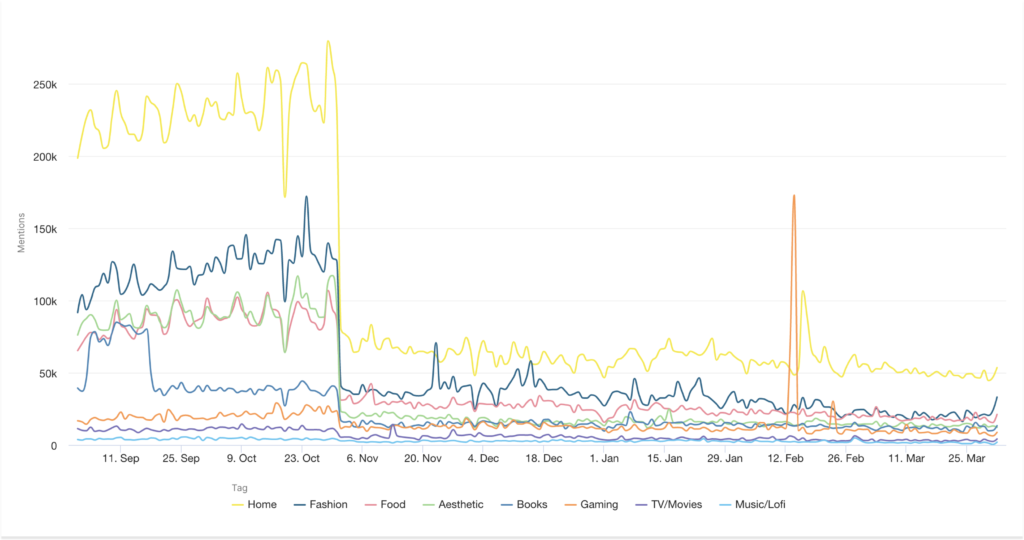
The graph above shows the timeline and the associated themes, you’ll see that ‘home’ has the biggest seasonal drop-off, fashion, aesthetic, and food have smaller drops, and gaming, TV & movies, and music, remain consistent throughout the year.
This suggests that while the more significant themes are seasonal, they continue growing each year and introducing smaller trends into their canon. The consistency around TV, music and gaming shows that these smaller trends are becoming sub-genres in their own right.
When i mapped this against engagement three things became clear:
- Level of engagement shows no correlation to volume of mentions. This has only really happened since the explosion of short-form video. When text/images were the default social content, engagement would usually follow a pretty similar line to mentions.
- Most of the huge spikes of engagement are driven by just one piece of content.
- Nine times out of ten that content is coming from either TikTok or YouTube
The Subgenres of Cosy
This blog post is already quite long, so I’m just going to do a top line look at the themes that were more consistent.
Books

- The only search that over-indexed in the UK spelling of cosy. A big UK audience but also many Anglophiles
- Twitter, TikTok and Reddit are key platforms for the cozy bookish, but early data shows threads is becoming a key contender in this space
- Cozy crime, cozy fantasy, and cozy mysteries are becoming full-blown sub-genres
- Cozy reading nooks crossover into the cozy home trend
Movies, TV, & Music

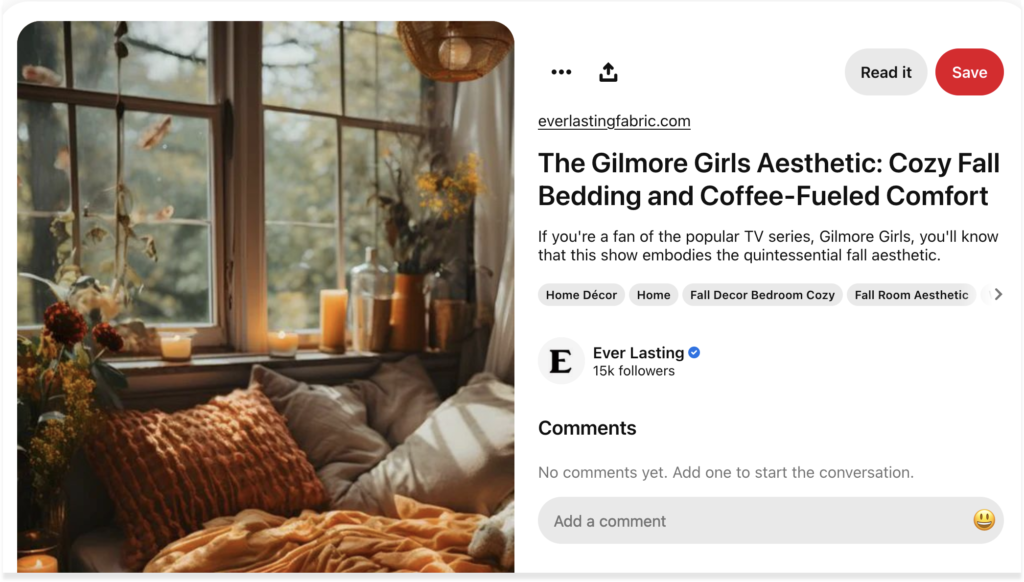
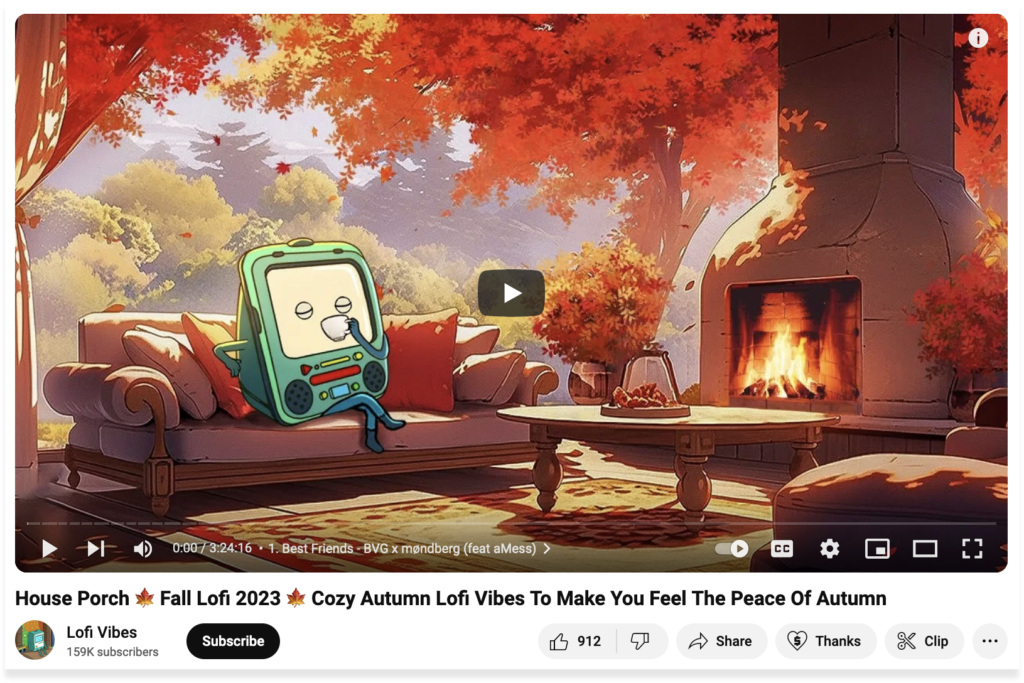
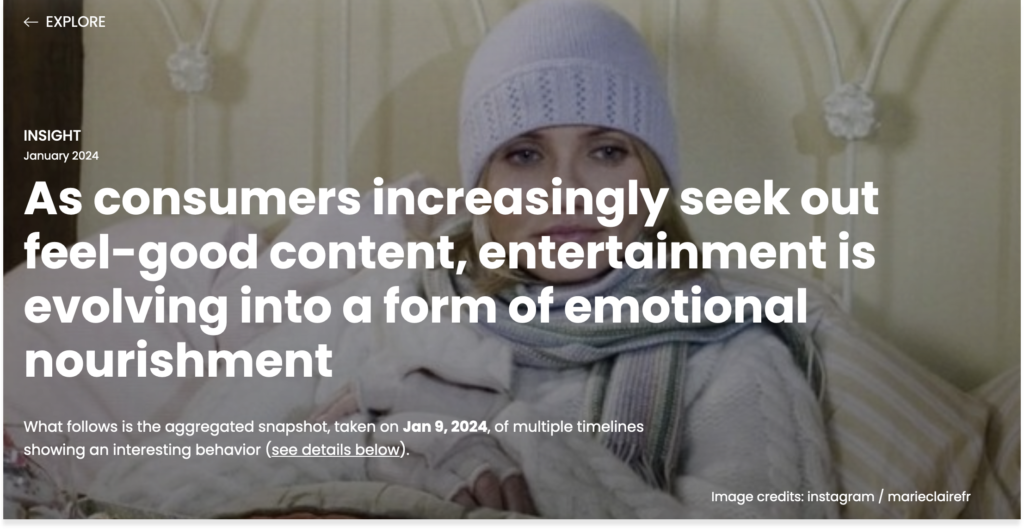
Although a smaller volume, cosy music is largely focused around seasonal lofi beats playlist videos, which are usually hours long, so the engagement time is phenomenal. Cosy beats was popularised by the lofi girl on YouTube, but has extended into hundreds of copycat channels. These channels are inherently seasonal with thousands of cosy fall/cosy winter/cosy spring and cosy summer specific playlists.
There’s a whole TV/Home cosy crossover around ‘The Gilmore Girls Aesthetic’, almost entirely driven by Pinterest. It’s super seasonal, but for every season, it has generated over 200k posts in the last year. Not bad for a TV show that aired 24 years ago! It ties back to the cosy love and ongoing trend of all things nostalgic.
Movie nights and in particular family movie nights are also part of this theme, people don’t talk about specific shows or movies, more the idea of getting cosy and watching something. The content itself is almost irrelevant.
Spotlight on Cosy Gaming
What is cosy gaming and why should you care?
Gaming is now a bigger industry than music, TV, and film combined. The UKIE projects it to be worth over 200 billion dollars globally by 2025.
People think of gaming as a male-dominated Call of Duty/Helldivers space. Although this is true tot a certain exten, there’s a growing gaming genre that is the opposite of this intense, action-fuelled melee. The concept of cosy gaming isn’t new; these types of games have been around for a long while.
Cosy gaming, or wholesome gaming, refers to video games that provide a relaxing, calming, and stress-free gaming experience, usually with simple gameplay mechanics, non-photo realistic visual styles, and a focus on activities like crafting, farming, exploring, or building. The trend gained popularity around the late 2000s and early 2010s with games like Minecraft and Stardew Valley, but it really kicked off again during the pandemic with Animal Crossing New Horizons. The vibe here is supremely low-stakes and peaceful.
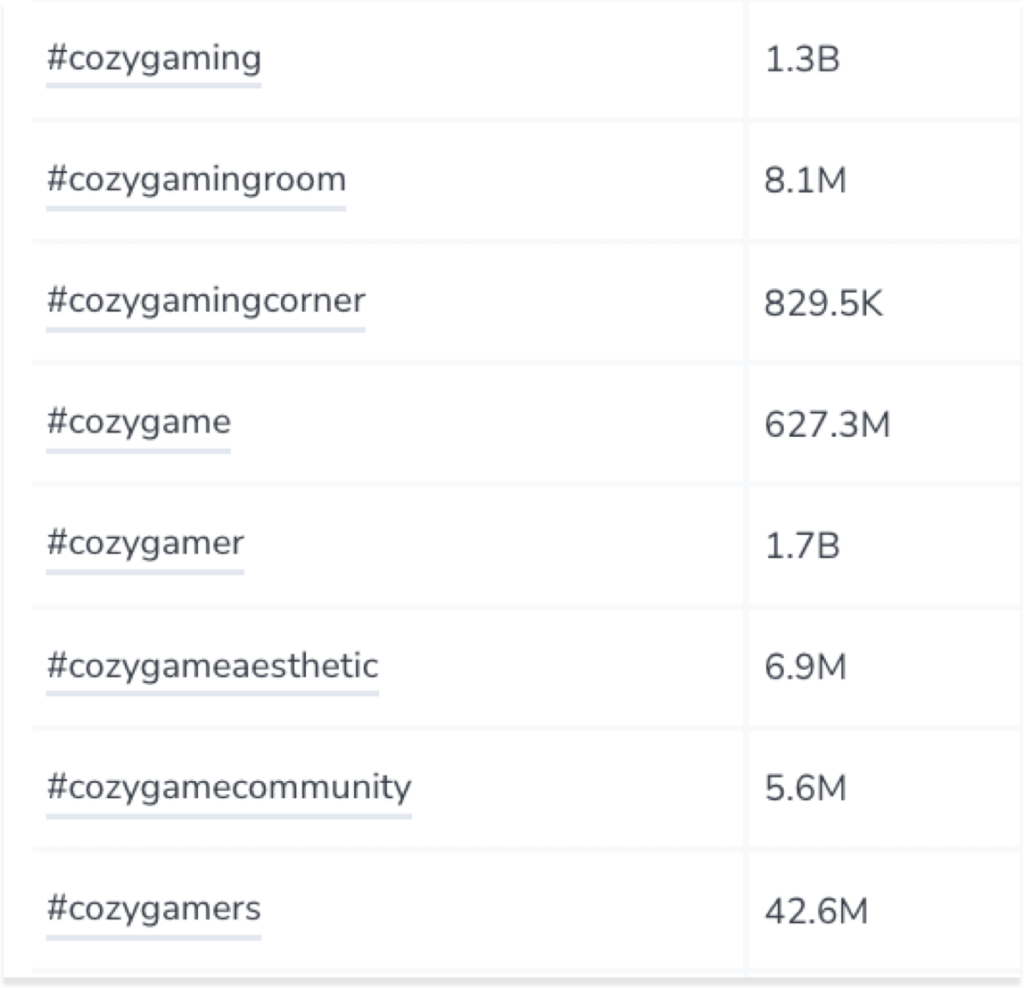
These are the hashtag views on TikTok around some of the bigger cosy gaming hashtags.
It’s quite large.
Below you’ll see the global search data around cosy gaming over the last five years. It’s definitely trending up.
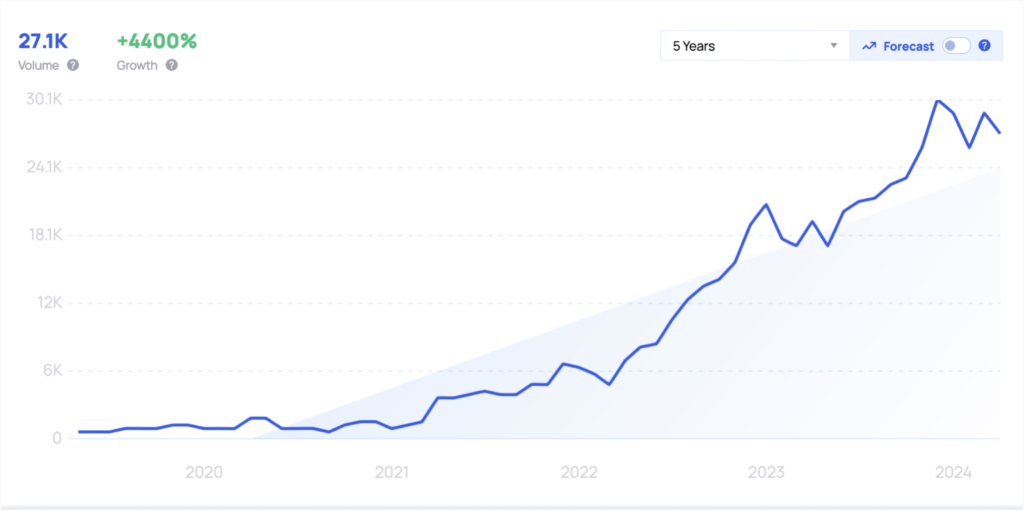
Key Findings
- Demographically, cozy gamers are much more likely to be female than male.
- Cosy gaming does not peak in Autumn/Fall but is instead remarkably consistent year round
- According to the data we can access, cosy gamers are most likely younger millennials.
- Cozy gamers are also into art, collecting, anime and cats
- As the market becomes more saturated gamers are becoming bored with
- formulaic games
- Nintendo Switch is the unofficial home of cozy gaming but since the release of the Steam Deck many gamers are considering switching due to the wider variety
- of games
- Reddit is just about the gaming whereas TikTok and Pinterest heavily crossover into the whole cozy lifestyle and aesthetic.

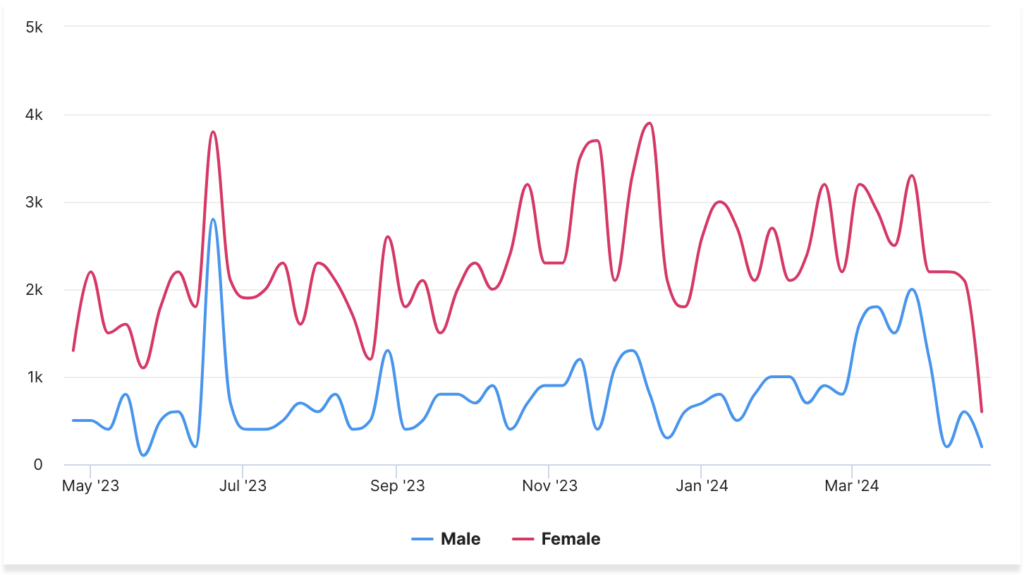
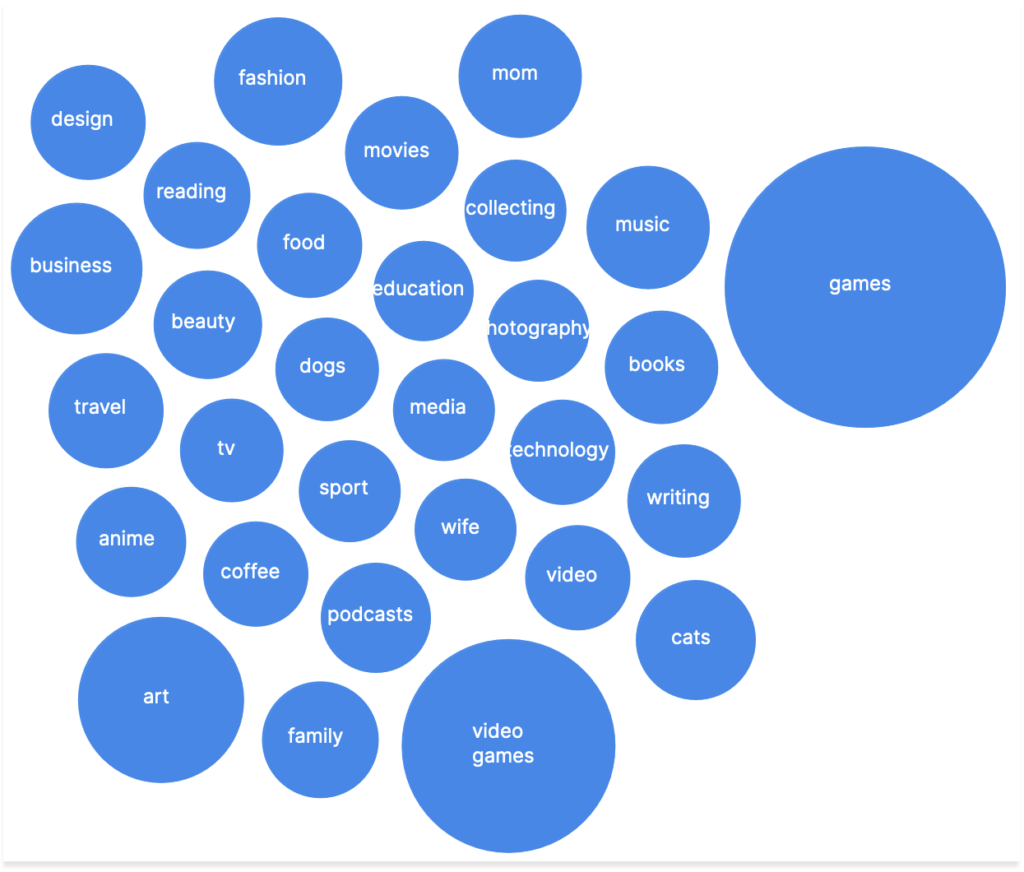
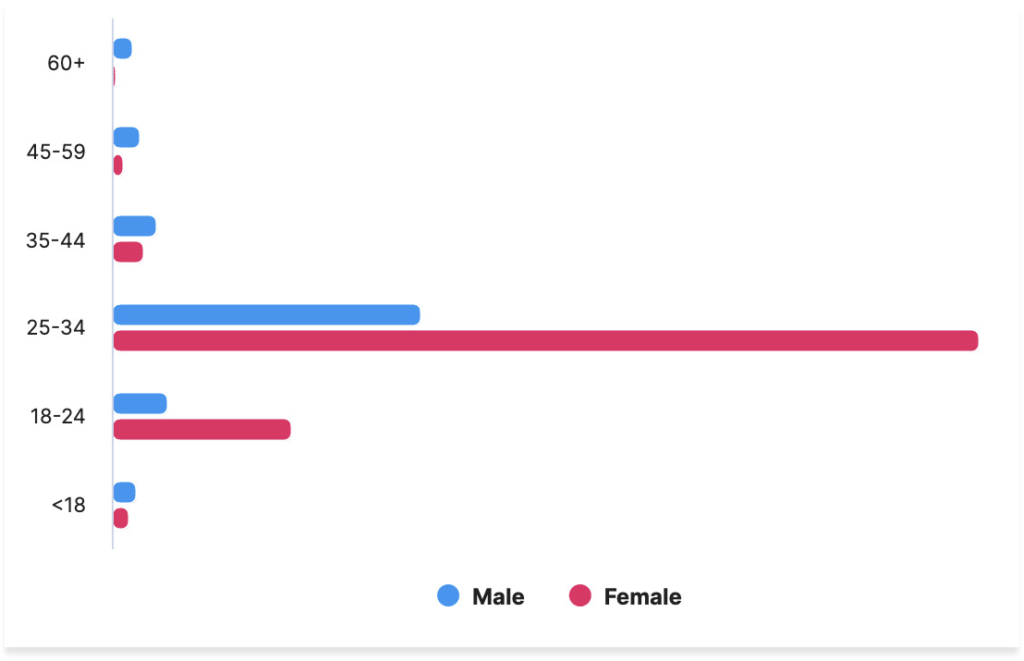
Cozy gaming is accessible to all!
The demographic data available to us will always have a platform skew.
I found this Reddit thread in r/CozyGamers last week talking about how old gamers on this sub were.
The ages ranged from teens to people in their mid-70s.
Cozy gaming is for non-traditional gamers.
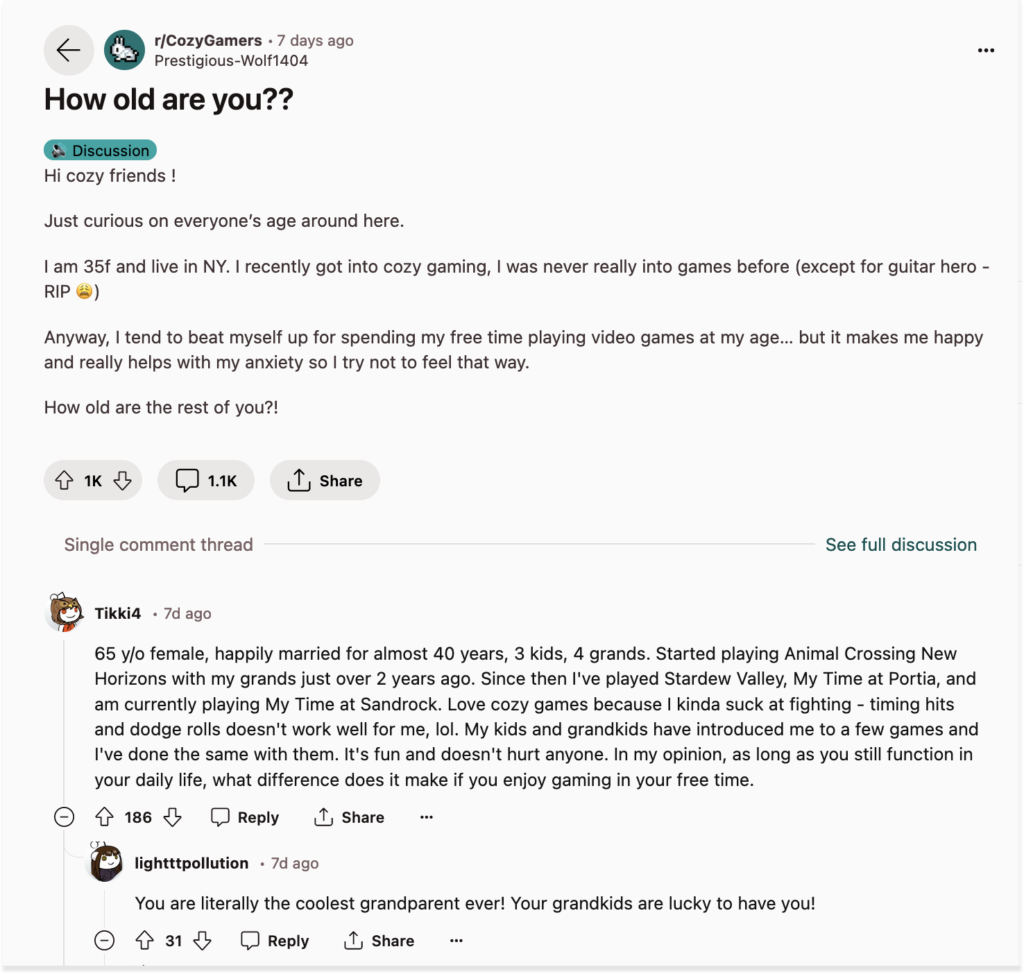
Final thoughts
In 2024 everything can be cosy.

This mass of connections shows the crossover from #cozy to other hashtags on TikTok over the last 60 days.
It crosses over with gaming, friends, autumn, interior design, ASMR, cottagecore, Minecraft, booktok, nature, Hello Kitty, loungewear, productivity, gardening, romance, moods, TV shows, photography, goblincore, cooking, and many more.
This is just one platform, 2 months worth of data, and outside of the traditional cosy season.
Cosy is here to stay and it’s happening year round.
If you’d like to learn more about anything I’ve shared here, or you have a project you’d like to collaborate on, please send me a message!










